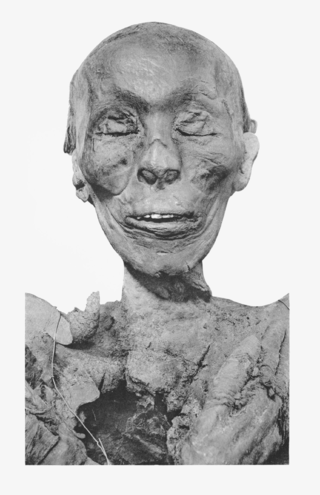Queen Hatshepsut is probably the most famous female ruler of Ancient Egypt after Cleopatra.
Officially, she ruled jointly with Thutmose III, who had ascended to the throne the previous year as a child of about two years old. Hatshepsut was the chief wife of Thutmose II, Thutmose III's father.
At first glance this sounds like she was "just" the guardian of Thutmose III and representative of him until he came of age, but her actions and the way she presented herself point out that she was recognized and accepted as ruler (I'm intentionally avoiding the word "queen" here):
- She build a new tomb worthy of a pharaoh (from Wikipedia: "Hatshepsut had begun construction of a tomb when she was the Great Royal Wife of Thutmose II, but the scale of this was not suitable for a pharaoh, so when she ascended the throne, preparation for another burial started."
- There are several depictions of her with Thutmose III in which she has the more important role or more prominent position in front of a God, like in this example (Source: Wikipedia. Hieroglyphs showing Thutmose III on the left and Hatshepsut on the right, she having the trappings of the greater role — Red Chapel, Karnak)
- She was depicted wearing the false beard, double crown and uraeus identifying her as king, which confused Egyptologists and led them to believe she was male for several decades.
This is called the "Hatshepsut Problem": that the queen of Egypt was depicted with male body and the male insignia of power - the false beard.
Egyptologist Jean-François Champollion wrote (source: Wikipedia again):
If I felt somewhat surprised at seeing here, as elsewhere throughout the temple, the renowned Moeris [Thutmose III], adorned with all the insignia of royalty, giving place to this Amenenthe [Hatshepsut], for whose name we may search the royal lists in vain, still more astonished was I to find upon reading the inscriptions that wherever they referred to this bearded king in the usual dress of the Pharaohs, nouns and verbs were in the feminine, as though a queen were in question. I found the same peculiarity everywhere...
I'd like to know which social classes during the reign of Hatshepsut where aware she was a woman. Any literate person in ancient Egypt would know about the biological sex of Hatshepsut if they read inscriptions using female verbs, but the number of those people was probably very small and limited to higher social classes. What about artisans and craftsmen who could read a simplyfied script? What about ordinary workers and farmers? Did those commoners who never saw her in person know she was a woman or did they assume she was a man?



